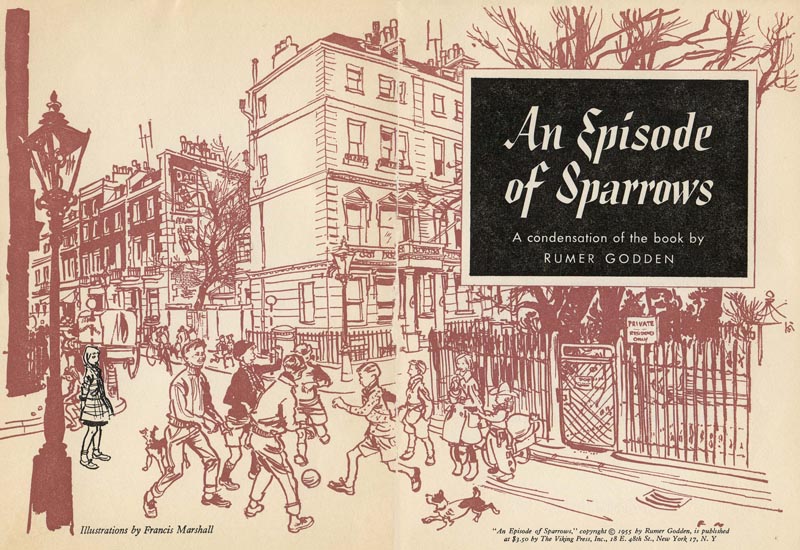
While details of Francis Marshall's career don't seem to be readily available, we can guess that the 1950's were a busy, productive time for him.

In addition to whatever work he was finding in England, he had been discovered by the editors of Reader's Digest Condensed Books.
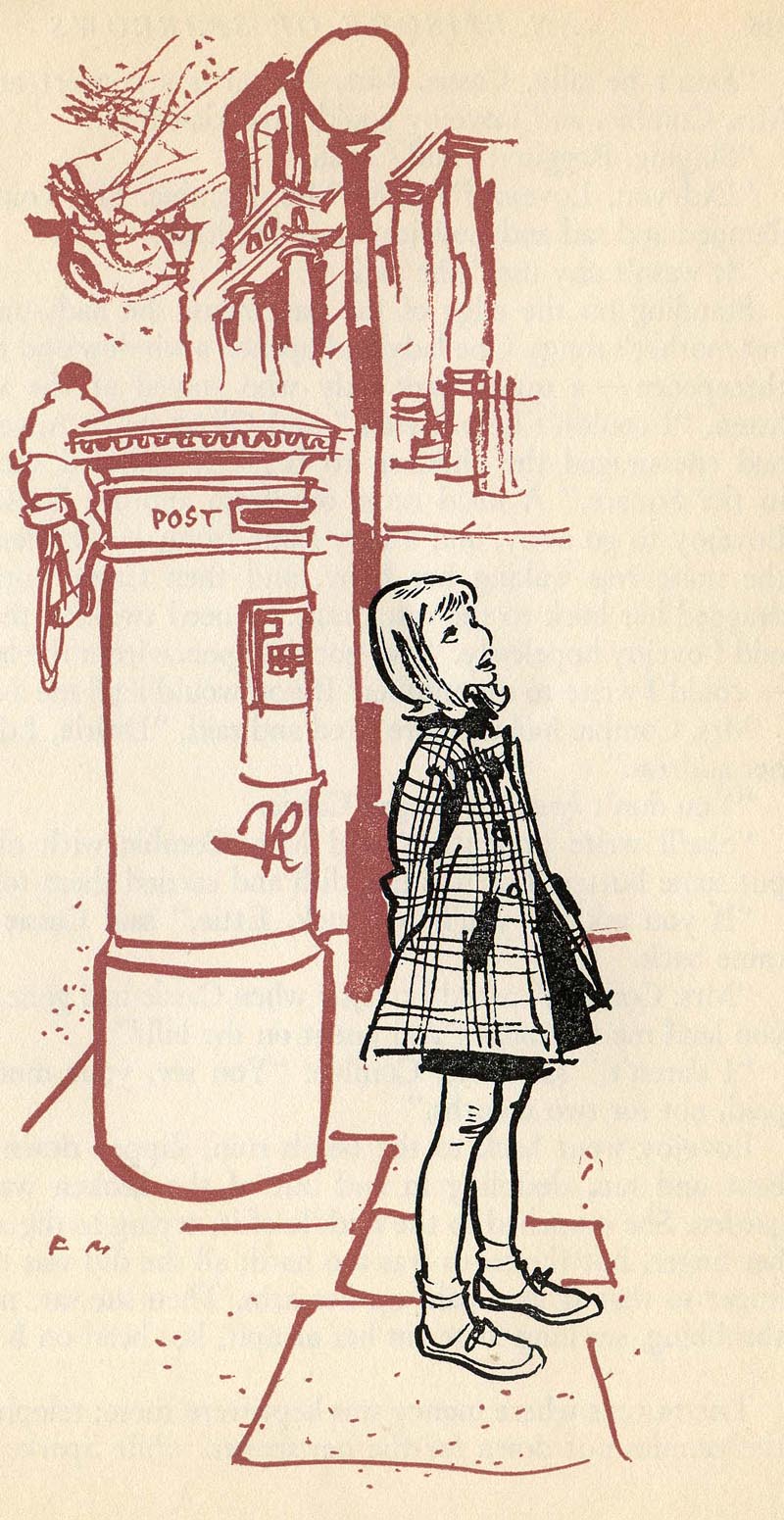
All of these illustrations date from 1955 to 1958...
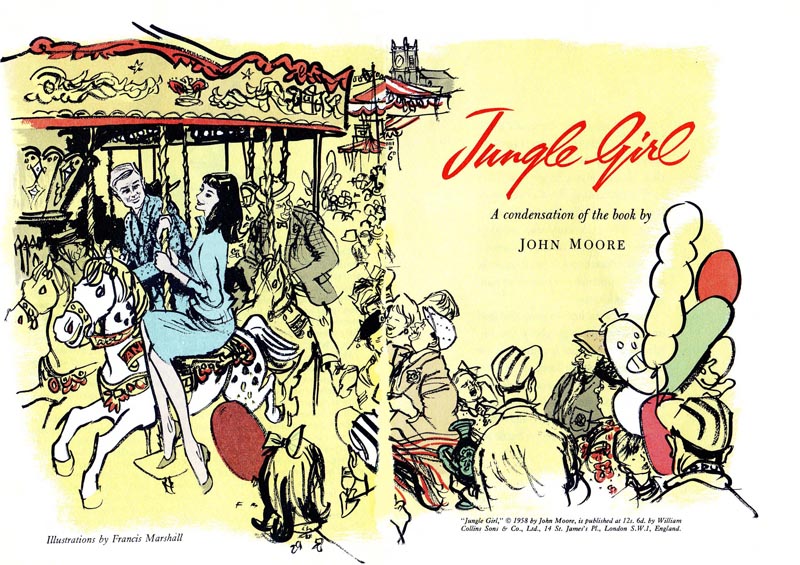

then, in 1959, Marshall's book "Magazine Illustration" was published, which suggests that the artist was enjoying a busy career doing, well, magazine illustration.
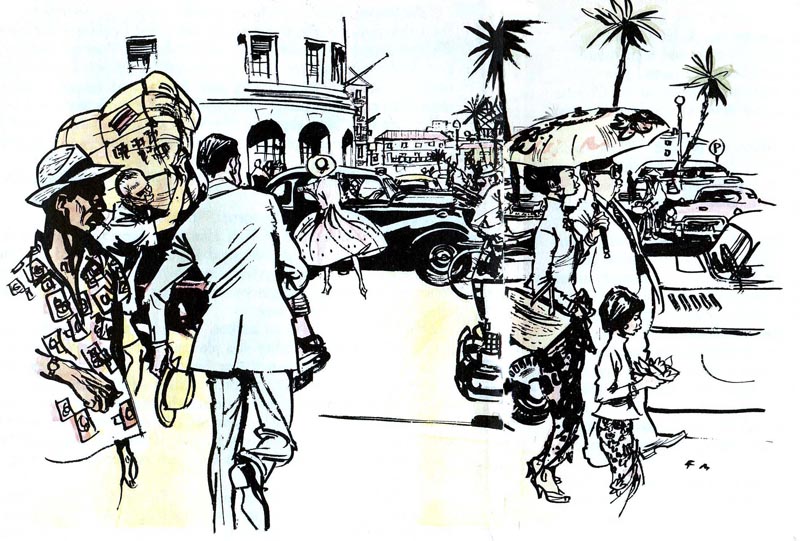
Also in '59, Marshall's RDCB work was included in the first annual show (and book) of the Society of Illustrators, as noted in this November 1959 article from American Artist magazine.
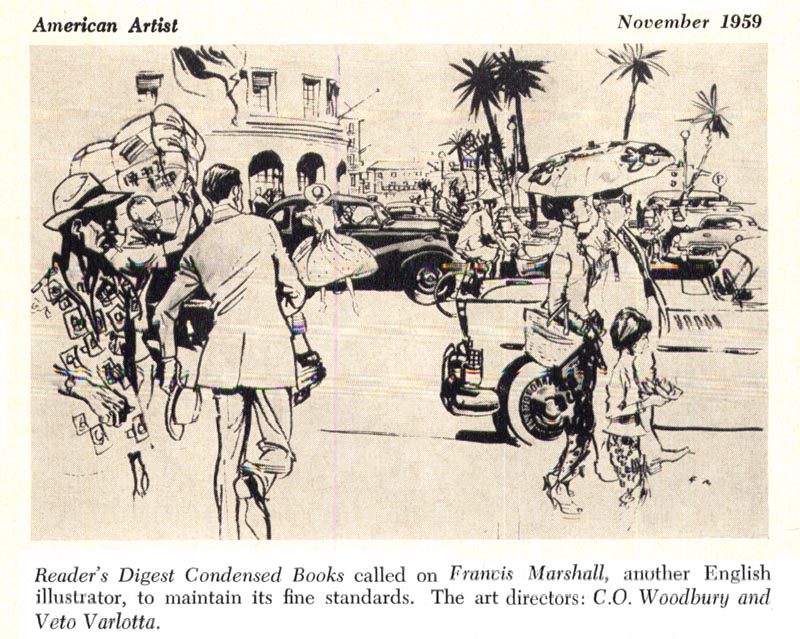
We've already determined that Marshall preferred to sketch 'from life', and some of his large scenes like the one below might have been done on location...
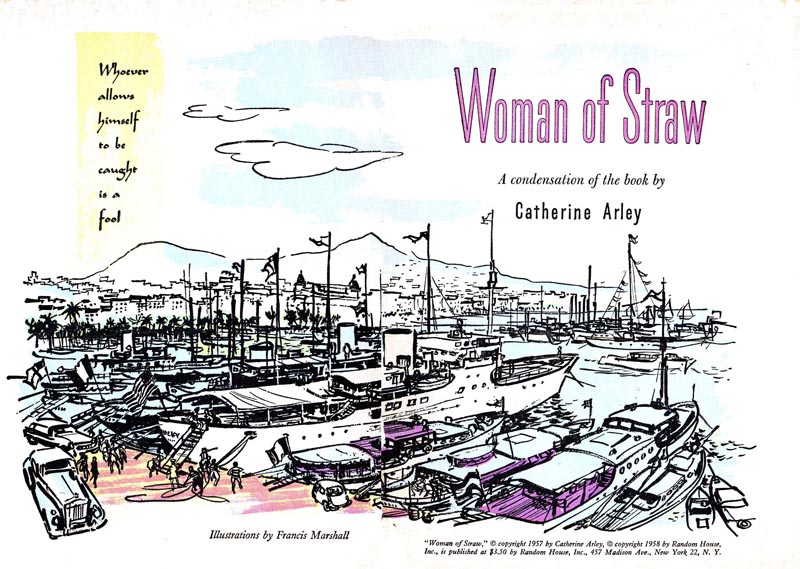
... but I think its unlikely that, in some of the complex story specific scenes (like the one below), he posed everyone and asked them to hold still while he executed his drawing. Did Marshall rely on photo reference, drawings culled from his many sketchbooks, or did he create these figures 'out of his head' for these scenes?

Here's another interesting example: The background scene in the pub very likely was done on location. It looks like Marshall probably inserted the story's main characters (at lower right) to an existing drawing from his sketchbooks.
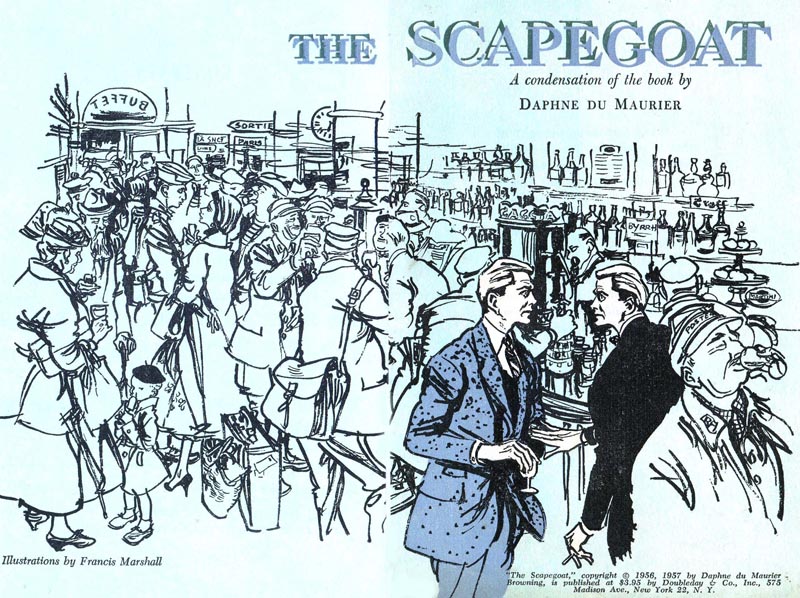
Once again, thanks to Harold Henriksen for sharing all these terrific Francis Marshall illustrations with us!

* My Francis Marshall Flickr set.
Your blog is the best. I love all the classic inspiration. So many amazing artists!
ReplyDeletefantastic stuff in this round (well, in all of them)- they'll be closely studied!
ReplyDeleteKendra; Thank you - you're comment made my day :^)
ReplyDeletetonci; good to hear - I imagine that studying FM will make your formidable work even more admirable, mon ami.
Leif,
ReplyDeleteThanks for the blogs about Francis Marshall! Feel free to link to any of my FM Barbara Cartland covers!
Both he and Allan Kass are my favorite illustrators! Of course, I discovered them from reading romance novels, which goes to show that you can find good art anywhere!
Rhonda
What a treat! To see an artist's work that's old but new again! And what a towering talent Marshall had on his design, concepts, the fluid drawing of people and scenes. Thanks, again, Leif, and to the contributors of FM's illustrations.
ReplyDeleteGreat post. Marshall's work is timeless. It brings out the most from the locations and figures but never slips into caricature, great.
ReplyDeleteLeif,
ReplyDeleteSorry for coming so late to the debate - time-zones and all that.
Marshall was a prolific sketcher as I've attempted to be over the last decade or so. What I've found is that having built up a library of sketches of people -often just parts of the shoulder, the way a coat is draped, etc, pretty boring stuff in its own right - that it's easier to build up a rough layout of a scene much as a storyboard artist would and then by referencing your sketches to create a scene that looks like it was drawn on the spot. I think Marshall did this a lot -see the Stork club illustration from your first post - surely Orson Welles didn't hang about for a Limey artist to sketch him down on paper!
Great designs!
ReplyDeleteA real b&w virtuoso.
Roger; that does sound like a logical process - thanks for sharing your insight (and for sharing all those wonderful FM scans we've enjoyed this week). Regarding the Orson Welles thing: I must admit I accepted that Marshall sketched the scene as he saw it... based on what I've read about the Stork Club it seemed entirely plausible that all those celebs would have been present at the same time. You don't think so...?
ReplyDeleteLeif
ReplyDeleteIt's entirely plausible, but just as likely that as Ava Gardner was arriving, Welles was getting his coat.
Mostly sketches are an amalgamation of incidents over a period of time. It's what makes sketching so much better than photography for certain circumstances.
A,B,C and D were here doing this during the last 15 minutes, why not put them all together in the same frame?
Huh. Very interesting, Roger - thanks again for sharing your insight with us. :^)
ReplyDeleteDear Leif
ReplyDeleteSo, finally I see where Andy Wharol had his inpiration sources !
Cunha (São Paulo - Brasil)